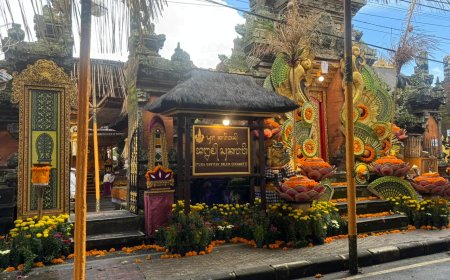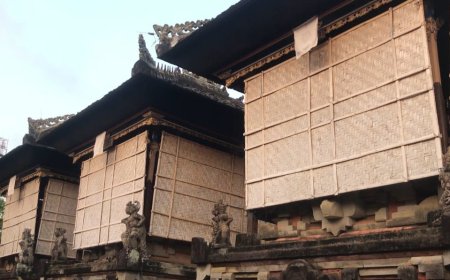History of Pura Kawitan Pangeran Tangkas Kori Agung: Interpreting the Beauty of Balinese Architecture
Pura Kawitan Tangkas Kori Agung, located in the village of Tangkas, Bali, is a magnificent embodiment of Balinese architecture, featuring vibrant main shrines and beautiful paduraksa. As a place of ancestral worship, this temple radiates the spiritual beauty and cultural richness of captivating Hindu-Balinese traditions.
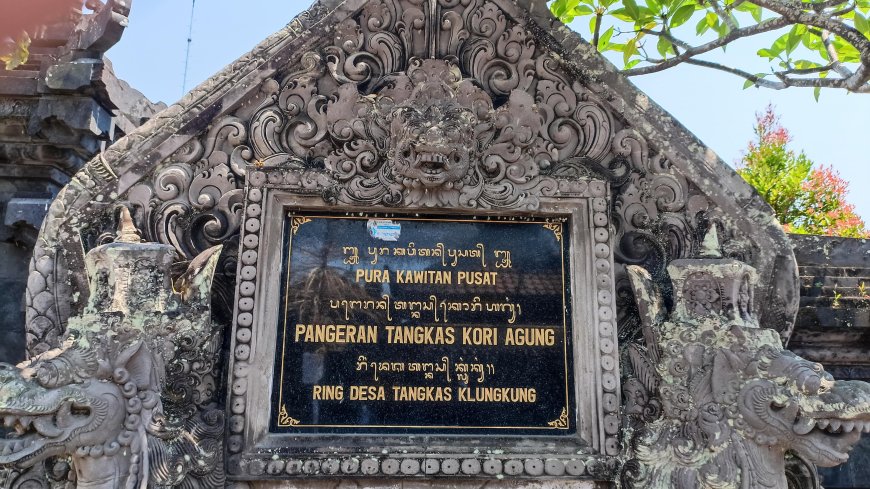
Bali, a paradise island in Indonesia, is not only renowned for its beautiful beaches but also for its rich cultural heritage. One shining example of Bali's cultural wealth is the Pura Kawitan Pangeran Tangkas Kori Agung, a temple complex that captivates with its architectural beauty. Pura Kawitan Pangeran Tangkas Kori Agung, an embodiment of Balinese architectural beauty, takes us on a journey through history that is rich and meaningful. Located in the village of Tangkas, Klungkung, this temple bears witness to the silent development of culture and religion on the island of the gods, Bali.
Deep-Rooted Traditions
Pura Kawitan Pangeran Tangkas Kori Agung has deep roots in Bali's history, originating during the reign of a prince who dedicated his life to enriching the spiritual lives of the people. Prince Tangkas Kori Agung, a revered figure, led the construction of this temple as a tangible expression of his dedication and love for Balinese culture.
The Beginning of Pura Kawitan Pangeran Tangkas Kori Agung
Pura Kawitan Pangeran Tangkas Kori Agung is located in the village of Tangkas, Klungkung, Bali. Like many temples in Bali, it has a rich history and mythology, serving as a place of worship and reverence for ancestors and sacred spirits believed to protect the village of Tangkas. The construction of Pura Kawitan Pangeran Tangkas Kori Agung began during the ancient kingdom of Bali, under the leadership of a king who highly valued culture and religion. The temple was designed to be a sacred and beautiful place, reflecting the grandeur and magnificence of Hindu-Balinese religious traditions.
The central temple of Kawitan Tangkas Kori Agung is a place of worship for the Kanuruhan family, dedicated to Batara Lingsir, Sire Arya Kanuruhan, pertisentana, and Pangeran Tangkas Kori Agung, who had three sons, namely Kiyai Brangsinga, Kiyai Tangkas, and Kiyai Pegatepan. The history of the Central Temple of Kawitan Tangkas Kori Agung began after the triumphant expedition led by Patih Gajah Mada from the Kingdom of Kediri, East Java. At that time, Sri Kresna Kepakisan came to Bali and settled in Samplangan.
Sri Kresna Kepakisan displayed a wise and influential nature, earning recognition from Ida for the wisdom of Arya Bata Mantra or Punggawa. Arya Kanuruhan, who served in Tangkas, built a temple in the village of Tangkas as a form of homage to the non-Javanese ancestors of Arya Kanuruhan. Thus, the temple became a continuation of the tradition of Pura Kawitan Tangkas Kori Agung as it is known today. Arya Kanuruhan, with joy, had his first son who received a stone in the Pura Kawitan Tangkas.
Within the Central Temple of Kawitan Tangkas Kori Agung, there is the main temple of Ida Ratu Tapakan, which has been built since 2010. The melaspas ceremony was conducted on redite Kliwon, Wuku Watugunung, Purnamaning Desta on April 17, 2011. The temple caretakers, central management, and attendants of the Tangkas Kori Agung temple gathered to celebrate the melaspas ceremony. This ceremony is also held on Saraswati day as the piodalan of Ida Betara Prasasti.
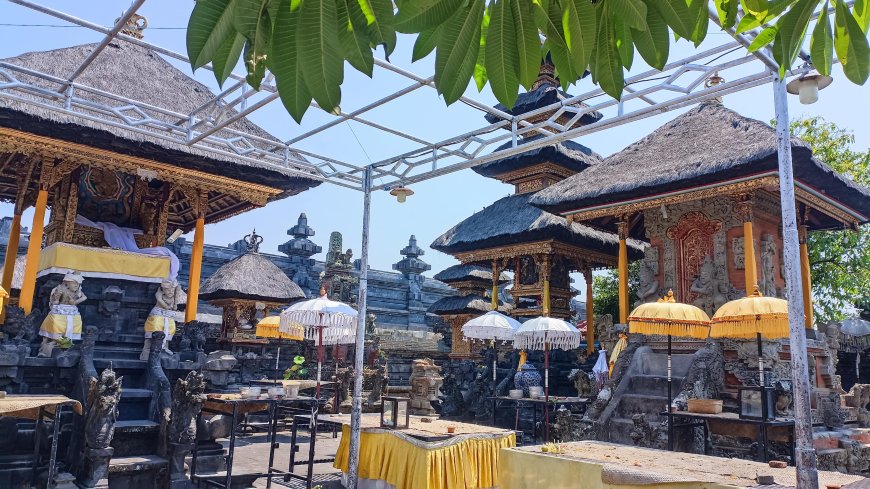
Utama Mandala (Photo Source: Editorial Collection)
Radiant Balinese Architecture
One of the main attractions of Pura Kawitan Pangeran Tangkas Kori Agung is its majestic and beautiful Balinese architecture. This architecture reflects the philosophy and beliefs of Hindu-Bali, emphasizing the harmony between humans, nature, and the divine. The temple has a series of main shrines or merus that are tall and colorful. The merus symbolize Mount Agung, the highest mountain in Bali considered sacred. The number of tiers on the meru represents the level of sanctity or significance of each structure.
The main gate or paduraksa in Pura Kawitan Tangkas Kori Agung is intricately crafted and adorned with stunning carvings. Paduraksa serves as the sacred gate that separates the worldly realm from the spiritual realm. In the temple area, there is also a Wantilan, an open hall used for various ceremonies and traditional Balinese dance performances. Wantilan is decorated with reliefs and statues depicting Hindu-Balinese mythological stories.
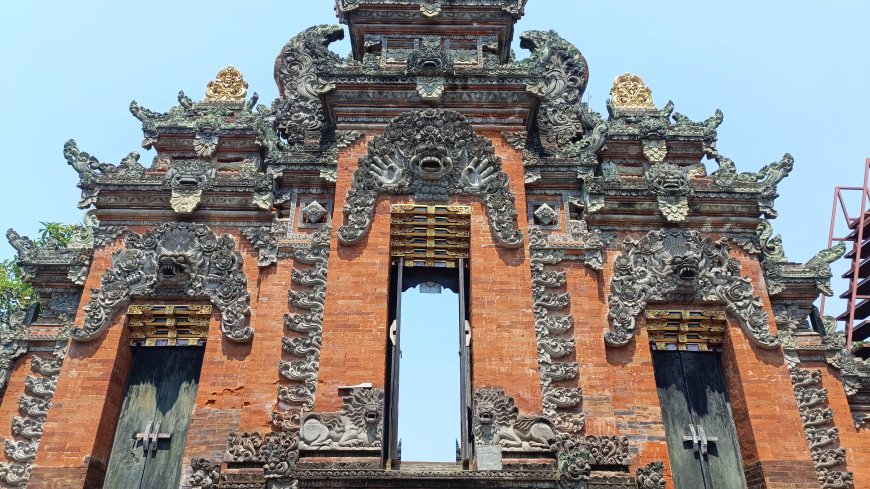
Gate Structure (Photo Source: Editorial Collection)
Worship and Traditions
Pura Kawitan Pangeran Tangkas Kori Agung is not only a tourist destination but also a place of worship and reverence for the local community. Traditional ceremonies, such as odalan (temple anniversary celebrations), are regularly held here. During these celebrations, the temple is filled with the fragrant aroma of incense, enchanting gamelan music, and captivating traditional dances.
Preservation of Cultural Heritage
It is important to note that the preservation of Pura Kawitan Pangeran Tangkas Kori Agung is a collective responsibility of the local community. The government, community, and relevant stakeholders work together to maintain the authenticity and sustainability of this temple, including involving the younger generation in cultural preservation efforts.
Pura Kawitan Pangeran Tangkas Kori Agung is one of the best examples of the captivating and profound Balinese architecture. Through a combination of artistic details, religious symbolism, and rich worship traditions, this temple is not just a tourist destination but also a crucial point in the history and cultural heritage of Bali that deserves preservation. The beauty and cultural richness of Pura Kawitan Pangeran Tangkas Kori Agung invite travelers to explore and experience the unforgettable spiritual wonders of Bali.


















































